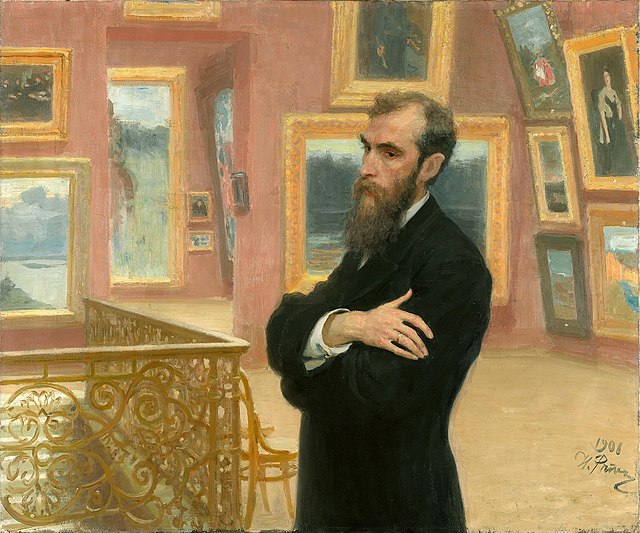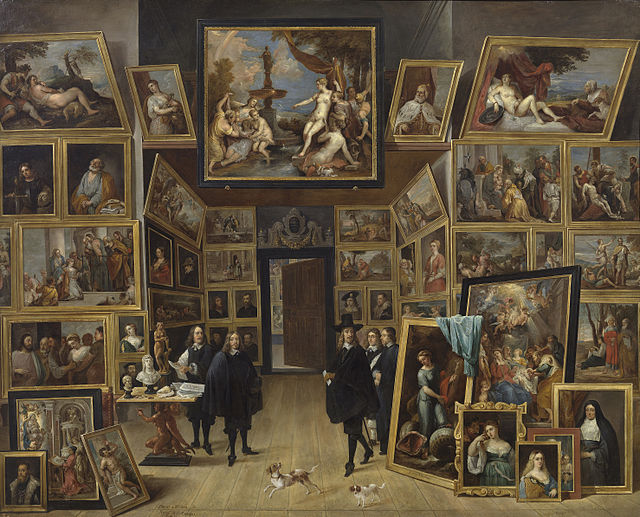History of schools of economic thought on arts and culture
The contemporary economics of culture most often takes as its starting point Baumol and Bowen's seminal work on the performing arts, which argues that reflection on the arts has been part of the history of economic thought since the birth of modern economics in the seventeenth century.
Ilya Repin, portrait of Pavel Tretyakov, 1901
David Teniers the Younger, Archduke Leopold Wilhelm of Austria in his painting gallery, second-third of the 17th century. In accordance with the custom of the time, the paintings are displayed frame against frame, filling the entire space from floor to ceiling.
Anne Robert Jacques Turgot
As part of the Arts & Crafts movement, William Morris advocated the omnipresence of artistic creation in everyday life through arts and crafts.
Cultural economics is the branch of economics that studies the relation of culture to economic outcomes. Here, 'culture' is defined by shared beliefs and preferences of respective groups. Programmatic issues include whether and how much culture matters as to economic outcomes and what its relation is to institutions. As a growing field in behavioral economics, the role of culture in economic behavior is increasingly being demonstrated to cause significant differentials in decision-making and the management and valuation of assets.
An example of culture being consumed via smartphone.





